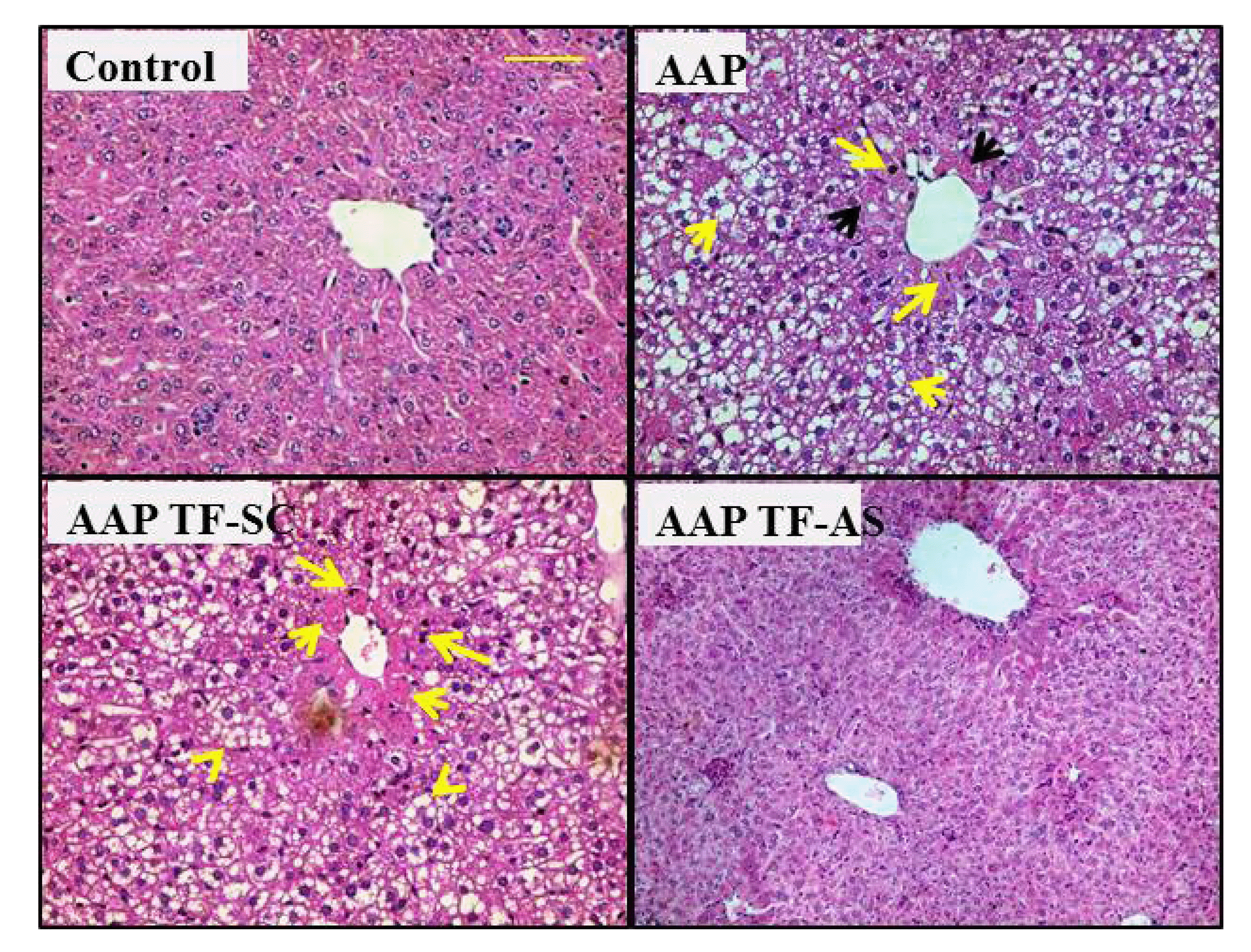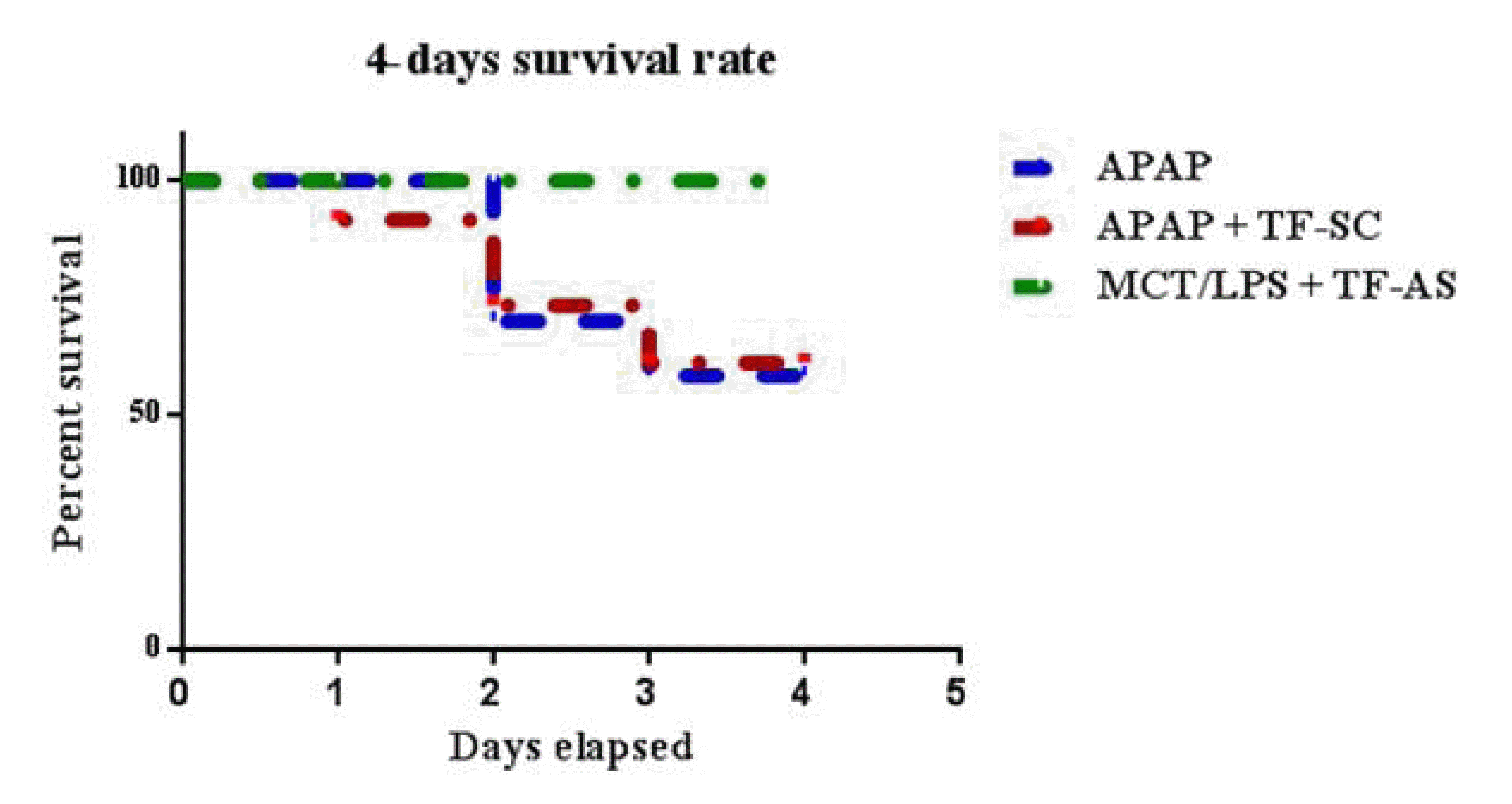1. Heestermans M, Salloum-Asfar S, Streef T, Laghmani EH, Salvatori D, Luken BM, Zeerleder SS, Spronk HMH, Korporaal SJ, Kirchhofer D, Wagenaar GTM, Versteeg HH, Reitsma PH, Renné T, van Vlijmen BJM. 2019; Mouse venous thrombosis upon silencing of anticoagulants depends on tissue factor and platelets, not FXII or neutrophils. Blood. 133:2090–2099. DOI:
10.1182/blood-2018-06-853762. PMID:
30898865.

2. Arai M, Mochida S, Ohno A, Ogata I, Obama H, Maruyama I, Fujiwara K. 1995; Blood coagulation equilibrium in rat liver microcirculation as evaluated by endothelial cell thrombomodulin and macrophage tissue factor. Thromb Res. 80:113–123. DOI:
10.1016/0049-3848(95)00157-M. PMID:
8588188.

3. Bataller R, Gäbele E, Parsons CJ, Morris T, Yang L, Schoonhoven R, Brenner DA, Rippe RA. 2005; Systemic infusion of angiotensin II exacerbates liver fibrosis in bile duct-ligated rats. Hepatology. 41:1046–1055. DOI:
10.1002/hep.20665. PMID:
15841463.

4. Copple BL, Woolley B, Banes A, Ganey PE, Roth RA. 2002; Anticoagulants prevent monocrotaline-induced hepatic parenchymal cell injury but not endothelial cell injury in the rat. Toxicol Appl Pharmacol. 180:186–196. DOI:
10.1006/taap.2002.9394. PMID:
12009858.

5. Pearson JM, Schultze AE, Schwartz KA, Scott MA, Davis JM, Roth RA. 1996; The thrombin inhibitor, hirudin, attenuates lipopolysaccharide-induced liver injury in the rat. J Pharmacol Exp Ther. 278:378–383. PMID:
8764373.
7. Nakamura K, Kadotani Y, Ushigome H, Akioka K, Okamoto M, Ohmori Y, Yaoi T, Fushiki S, Yoshimura R, Yoshimura N. 2002; Antisense oligonucleotide for tissue factor inhibits hepatic ischemic reperfusion injury. Biochem Biophys Res Commun. 297:433–441. DOI:
10.1016/S0006-291X(02)02024-7. PMID:
12270110.

8. Hammad MA, Abdel-Bakky MS, Walker LA, Ashfaq MK. 2011; Oxidized low-density lipoprotein and tissue factor are involved in monocrotaline/lipopolysaccharide-induced hepatotoxicity. Arch Toxicol. 85:1079–1089. DOI:
10.1007/s00204-011-0649-6. PMID:
21279329.

10. Ohata M, Lin M, Satre M, Tsukamoto H. 1997; Diminished retinoic acid signaling in hepatic stellate cells in cholestatic liver fibrosis. Am J Physiol. 272(3 Pt 1):G589–G596. DOI:
10.1152/ajpgi.1997.272.3.G589. PMID:
9124579.

11. Nagpal S, Chandraratna RA. 2000; Recent developments in receptor-selective retinoids. Curr Pharm Des. 6:919–931. DOI:
10.2174/1381612003400146. PMID:
10828316.

12. Mezaki Y, Yamaguchi N, Yoshikawa K, Miura M, Imai K, Itoh H, Senoo H. 2009; Insoluble, speckled cytosolic distribution of retinoic acid receptor alpha protein as a marker of hepatic stellate cell activation in vitro. J Histochem Cytochem. 57:687–699. DOI:
10.1369/jhc.2009.953208. PMID:
19332432. PMCID:
PMC2699324.

13. Abdel-Bakky MS, Hammad MA, Walker LA, Ashfaq MK. 2011; Tissue factor dependent liver injury causes release of retinoid receptors (RXR-α and RAR-α) as lipid droplets. Biochem Biophys Res Commun. 410:146–151. DOI:
10.1016/j.bbrc.2011.05.127. PMID:
21658367.

14. Abdel-Bakky MS, Helal GK, El-Sayed EM, Alhowail AH, Mansour AM, Alharbi KS, Amin E, Allam S, Salama SA, Saad AS. 2020; Silencing of tissue factor by antisense deoxyoligonucleotide mitigates thioacetamide-induced liver injury. Naunyn Schmiedebergs Arch Pharmacol. 393:1887–1898. DOI:
10.1007/s00210-020-01896-0. PMID:
32430618.

15. Hammad MA, Abdel-Bakky MS, Walker LA, Ashfaq MK. 2013; Tissue factor antisense deoxyoligonucleotide prevents monocrotaline/LPS hepatotoxicity in mice. J Appl Toxicol. 33:774–783. DOI:
10.1002/jat.2728. PMID:
22407844.

16. Gardner CR, Laskin JD, Dambach DM, Sacco M, Durham SK, Bruno MK, Cohen SD, Gordon MK, Gerecke DR, Zhou P, Laskin DL. 2002; Reduced hepatotoxicity of acetaminophen in mice lacking inducible nitric oxide synthase: potential role of tumor necrosis factor-alpha and interleukin-10. Toxicol Appl Pharmacol. 184:27–36. DOI:
10.1006/taap.2002.9474. PMID:
12392966.
18. Dragomir AC, Laskin JD, Laskin DL. 2011; Macrophage activation by factors released from acetaminophen-injured hepatocytes: potential role of HMGB1. Toxicol Appl Pharmacol. 253:170–177. DOI:
10.1016/j.taap.2011.04.003. PMID:
21513726. PMCID:
PMC3507385.

19. Liu ZX, Han D, Gunawan B, Kaplowitz N. 2006; Neutrophil depletion protects against murine acetaminophen hepatotoxicity. Hepatology. 43:1220–1230. DOI:
10.1002/hep.21175. PMID:
16729305.

20. Ganey PE, Luyendyk JP, Newport SW, Eagle TM, Maddox JF, Mackman N, Roth RA. 2007; Role of the coagulation system in acetaminophen-induced hepatotoxicity in mice. Hepatology. 46:1177–1186. DOI:
10.1002/hep.21779. PMID:
17654741.

21. Brass LF, Zhu L, Stalker TJ. 2008; Novel therapeutic targets at the platelet vascular interface. Arterioscler Thromb Vasc Biol. 28:s43–s50. DOI:
10.1161/ATVBAHA.107.161026. PMID:
18174448.

23. Friedman A, Halevy O, Schrift M, Arazi Y, Sklan D. 1993; Retinoic acid promotes proliferation and induces expression of retinoic acid receptor-alpha gene in murine T lymphocytes. Cell Immunol. 152:240–248. DOI:
10.1006/cimm.1993.1284. PMID:
8242764.
24. Okuno M, Sato T, Kitamoto T, Imai S, Kawada N, Suzuki Y, Yoshimura H, Moriwaki H, Onuki K, Masushige S, Muto Y, Friedman SL, Kato S, Kojima S. 1999; Increased 9,13-di-cis-retinoic acid in rat hepatic fibrosis: implication for a potential link between retinoid loss and TGF-beta mediated fibrogenesis in vivo. J Hepatol. 30:1073–1080. DOI:
10.1016/S0168-8278(99)80262-1. PMID:
10406186.
25. Chen Q, Yan D, Zhang Q, Zhang G, Xia M, Li J, Zhan W, Shen E, Li Z, Lin L, Chen YH, Wan X. 2020; Treatment of acetaminophen-induced liver failure by blocking the death checkpoint protein TRAIL. Biochim Biophys Acta Mol Basis Dis. 1866:165583. DOI:
10.1016/j.bbadis.2019.165583. PMID:
31676378.

26. Guo Q, Shen Z, Yu H, Lu G, Yu Y, Liu X, Zheng P. 2016; Carnosic acid protects against acetaminophen-induced hepatotoxicity by potentiating Nrf2-mediated antioxidant capacity in mice. Korean J Physiol Pharmacol. 20:15–23. DOI:
10.4196/kjpp.2016.20.1.15. PMID:
26807019. PMCID:
PMC4722187.

27. Wu YL, Jiang YZ, Jin XJ, Lian LH, Piao JY, Wan Y, Jin HR, Joon Lee J, Nan JX. 2010; Acanthoic acid, a diterpene in Acanthopanax koreanum, protects acetaminophen-induced hepatic toxicity in mice. Phytomedicine. 17:475–479. DOI:
10.1016/j.phymed.2009.07.011. PMID:
19836221.

28. Helal MG, Samra YA. 2020; Irbesartan mitigates acute liver injury, oxidative stress, and apoptosis induced by acetaminophen in mice. J Biochem Mol Toxicol. 34:e22447. DOI:
10.1002/jbt.22447. PMID:
31967706.

29. Li J, Li X, Xu W, Wang S, Hu Z, Zhang Q, Deng X, Wang J, Zhang J, Guo C. 2015; Antifibrotic effects of luteolin on hepatic stellate cells and liver fibrosis by targeting AKT/mTOR/p70S6K and TGFβ/Smad signalling pathways. Liver Int. 35:1222–1233. DOI:
10.1111/liv.12638. PMID:
25040634.

30. Bhushan B, Walesky C, Manley M, Gallagher T, Borude P, Edwards G, Monga SP, Apte U. 2014; Pro-regenerative signaling after acetaminophen-induced acute liver injury in mice identified using a novel incremental dose model. Am J Pathol. 184:3013–3025. DOI:
10.1016/j.ajpath.2014.07.019. PMID:
25193591. PMCID:
PMC4215032.

31. Bustany S, Cahu J, Guardiola P, Sola B. 2015; Cyclin D1 sensitizes myeloma cells to endoplasmic reticulum stress-mediated apoptosis by activating the unfolded protein response pathway. BMC Cancer. 15:262. DOI:
10.1186/s12885-015-1240-y. PMID:
25881299. PMCID:
PMC4399746.











 PDF
PDF Citation
Citation Print
Print


 XML Download
XML Download